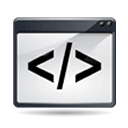Publisher review:Cluster setup scripts - Shell scripts to easily control a MATLAB distributing computing cluster What do these scripts do?=========================These Bourne shell scripts allow you to control a MATLAB Distributing Computing cluster (Version 2) easily. To use them, follow the steps below:Step 1: Configure ssh=====================To use these scripts, first set up ssh to be password free for the user under whom you have chosen the Distributed Computing Engine daemons (mdce) to run. There are numerous tutorials on how to do this on the internet. But here are some steps in brief:(1) Run ssh-keygen -t dsa to generate files. If you choose a non-empty passphrase, you can use ssh-agent and ssh-add to make life easier later on.(2) Copy the newly generated file id_dsa.pub to the .ssh directory of the mdce user on the remote machine and rename the file as "authorized_keys"Step 2: Edit the configuration files====================================Then, edit the following files:(1) matlabroot(2) mode(3) hostsMore detail for each in turn:(1) matlabrootThis must contain the root directory of the MATLAB installation on each cluster node. It must be the same for all nodes to use these scripts. For example:$ cat matlabroot/usr/local/matlab(2) modeThis must contain the string "synchronous" or the string "asynchronous". If the former, then commands are executed by the scripts synchonously, or in a queue, with each starting only when the previous has returned. If the latter, then commands are executed by the scripts asynchonrously, or simultaneously, with them all running in the background at the same time. However, the scripts wait until they have all finished before returning.The latter mode is faster, but it is easier to see what the scripts are doing when run in the former mode.(3) hostsThis the main configuration file for the cluster. It is easiest to see what is going on with an example:$ cat hostsMDCE hosts Job Managers Workersmachine1 jm1 jm1,jm1machine2 - -machine3 jm2,jm3 -machine4 - jm2machine5 - jm2,jm3The first column consists of the list of machines which form the cluster.The second column consists of job manager names. In the above example, machine1 will run a job manager called jm1 and machine3 will run two job managers, called jm2 and jm3. The other machines run no job managers.The third column defines which workers will run, where they run and to which job managers they will attach. In the example above, two worker processes will run on machine1 and attach to the job manager called jm1. On machine4, one worker will run, attached to jm2 and machine5 will run 2 workers, one attached to jm2 and the other attached to jm3. Nothing execpt the mdce itself will run on machine2.Any whitespace can separate the columns but an empty entry must be a hyphen "-" as in the example.Step 3: Run the commands========================In the directory /toolbox/distcomp/bin you will find the following commands:mdcestartjobmanager.shstopjobmanager.shstartworker.shstopworker.shIn this package, you will find a "distributed" version of each of these, prefixed with a "d". Namely:dmdcedstartjobmanagers.shdstopjobmanagers.shdstartworkers.shdstopworkers.shEach of these commands can accept the same command-line arguments as their non-distributed counterparts, with expection of those that are defined by the hosts file. These are:For dstartjobmanagers.sh and dstopjobmanagers.sh, -name and -remotehost. For dstartworkers.sh and dstopworkers.sh, -name, -jobmanager, -jobmanagerhost and -remotehost.To bring up a cluster typical usage might be as follows (output suppressed):$./dmdce start$./dstartjobmanagers.sh -clean$./dstartworkers.shand to take down a cluster:$./dstopworkers.sh$./dstopjobmanagers.sh$./dmdce stopalthough just the last line would do the trick. The only other command in the directory is "dssh" which loops over the list of hosts and runs a command using ssh on each. The dmdce command uses this to run mdce on remote hosts, as did the other commands before the -remotehost option became available. A nice way of checking that your ssh is configured properly is to run something like: $./dssh hostnameAnother use of ./dssh would be to blow away all the checkpoint history, usually in /var/lib/mdce:$./dssh rm -rf /var/lib/mdce Requirements: · MATLAB Release: R2006a · MATLAB Distributed Computing Engine
Cluster setups 1.1 is a Matlab script for Development Tools scripts design by Russell Goyder.
It runs on following operating system: Windows / Linux / Mac OS / BSD / Solaris.
Operating system:Windows / Linux / Mac OS / BSD / Solaris


 Cluster setups 1.1 script details
Cluster setups 1.1 script details 
